Burgundy Backcountry Riches Prospected in Hautes-Côtes de Nuits and Regional Appellations Overlooking the Slopes of the Great Communes Red, White and Sparkling (9-Bottle Pack $373)
In Burgundy, the vagaries of weather play an integral part in a given terroir’s potential; even the most ideal soil matrix, with a perfect balance of minerals, humus and micro-organisms, is useless if frost kills the buds and rain drowns the roots. The historical divisions among the domains of Burgundy are (compared to Bordeaux) very much on a human scale, with holdings subdivided among families, but nearly all are demarcated, to some extent, based on the immutable quality of the terroir.
What this legal concept did not anticipate is that the weather, volatile from vintage to vintage, might change on a grander scale and bring different weather on a more regular basis. Colder areas, once considered inferior, are currently finding that global warming allows their grapes to ripen more fully, and domains once spared rain are now deluged in the spring.
These changes are also happening on a human scale; the average Burgundian temperature has increased one degree Celsius since 1987, while flowering and harvesting have been on average two weeks earlier in that period compared with the previous two decades.
Among the winners in this high-stakes meteorological gamble are some outlying regions in Burgundy that don’t get a lot of airplay. As a result, these are wines whose prices have not yet caught up with their ever-increasing quality.
Bourgogne Hautes Côtes de Nuits: Typically ‘Nuits’
Due west of Nuits-Saint-Georges, in the wild hinterlands of Burgundy, along southern half of a 12 mile stretch of vineland known as the ‘Champs-Élysées of the Bourgogne’, lies a lesser known wine region ripe for discovery. Once neglected by both growers and patrons, the area known as Hautes-Côtes de Nuits has enjoyed a viticultural renaissance in the past half century that has manifested terroirs similar to those in the heralded Côtes itself.
Overlooking the slopes of Gevrey-Chambertin and extending as far as the wood of Corton, the appellation was officially recognized in 1961 and covers 20 communes; 16 in the Hautes Côtes region in the département of Côte-d’Or, plus the higher areas of 4 communes in the Côte de Nuits where elevations average 1200 feet. Vines are planted along sides of valleys that cut through the Jurassic limestone plateau to the west of the Côte; the underlying rock is the same as that of the Côte but the soil is thin or non-existent, formed by a mixture of eroded limestone and marly subsoil.
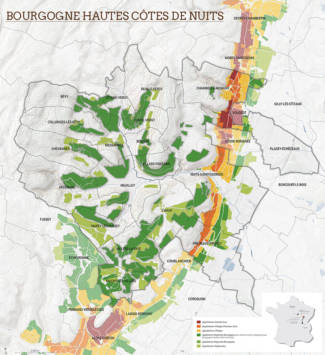
2019 Vintage: Concentrated and Vibrant
“At almost every 2019 tasting I was struck by how beautifully the ripe yet precise fruit, the elegant tannins and the lively acidity gelled on the palate. Although all the top red wines from the pinot noir grape have excellent aging potential, most of them are already open and enjoyable. That reminds me of great modern vintages like 1985 and 2009.” – James Suckling.
Bernard Hervet, former director of Faiveley and Bouchard, went even further: “The long hot, dry summer was ideal for Burgundy and created perfect conditions that could perhaps rival 1865, the greatest vintage of all.”
Despite two bouts of frost in April and rain at flowering, conditions quickly righted themselves. Short but intense heat spikes throughout the summer concentrated the juice in small berries (known in Burgundy as ‘marbles’), leaving high tartaric acid levels and low levels of malic, meaning that wines kept a stable acidity even after the second fermentation. As a result, 2019 wines favor concentration and depth while remaining focused, vibrant and with remarkable transparency to individual terroirs.
2018 Vintage: Youthful Appeal
Weather is arbitrary; the decision on when to pick your grapes is not. Nowhere is this determination more vital than in Burgundy (where a harvest can be decimated overnight), and no vintage is more exemplary of this delicate balance of risks and rewards than 2018. For those who waited until full phenolic ripeness, the harvest provided both quality and quantity.
Winter and spring were unusually wet and warm, with rainfall in both January and March twice the average for the time of year. This provided water reserves that was key to vine health throughout the torrid growing season, where temperatures were consistently above average. July brought two ferocious hailstorms, but so successful had been the flowering that there was already a good crop on the vines; in some ways the hail acted as a beneficial green harvest. Since vine age, exposition, soil type, rootstock, pruning method, the number of bunches on the vine and management all influence when fruit reaches full ripeness, the harvest date throughout the Côtes de Nuits varied, with some great growers, including Gevrey-Chambertin opting to pick early to preserve freshness in the wines.
Domaine des Perdrix
Perdrix (translated in English to the partridge that appears on the label) was taken over in 1996 by the Devillards, owners of Domaine du Château de Chamirey in Mercurey, Domaine de la Ferté in Givry, Domaine de la Garenne in Mâconnais and Domaine Rolet in Jura. According the Robert Parker, it is a prime example of the ‘great undiscovered terroirs’ lurking among the more famous domain names of the Côtes de Nuits—it has been at the top of several of his blind tastings. The small, 30-acre estate produces wine from vines whose age averages 35 years; Devillards have invested considerable sum to bring both the philosophy and the technology of Perdrix to its current level.
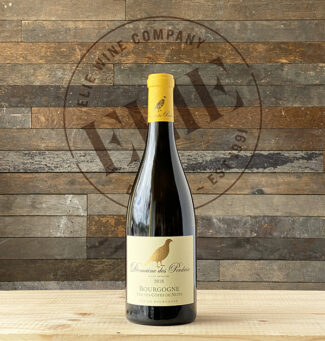 Domaine des Perdrix, 2018 Bourgogne Hautes-Côtes de Nuits Blanc ($45)
Domaine des Perdrix, 2018 Bourgogne Hautes-Côtes de Nuits Blanc ($45)
100% Chardonnay planted on the high slopes of Prémeaux Prissey at an altitude of 1200 feet, the grapes originate in a single-acre plot of clay and limestone. After harvesting by hand, aging in Allier and Vosges oak (10% new) lasts nine months. The wine is pale gold with green tints, showing crisp apple and lemon on the nose with acacia flowers as an accent. The palate is delicate and slightly unctuous with cream and vanilla on the finish.
Domaine Thibault Liger-Belair
The estate (originally called Comte Liger-Belair) was created in 1720 in Nuits-Saint-Georges, and soon became one of the most important wine growing and trading houses in Burgundy. After many years and successive generations had met with varying degrees of success, Thibault Liger-Belair took over in 2001, and found the 20-acre estate in need of some attention. His immediate switch to organic farming was a matter of necessity as much as responsible stewardship: “The vineyards were in a bad condition, with compacted soils. I couldn’t do anything else other than organics,” he says, and in 2004, he discovered biodynamics: “I saw a change in my vineyard, which went from grey soils to brown/red and then sometimes to black.”
Still, his overarching philosophy is that each vineyard needs something different: “I don’t like 100% of anything: new barrels, whole clusters, etc. My job is to decide which grapes we have and then decide a viticulture and winemaking approach.”
In 2018, he made wine from 23 different appellations and purchased grapes from a ten more, where he had worked the vines himself. “We don’t purchase grapes where we don’t do the work,” he maintains.
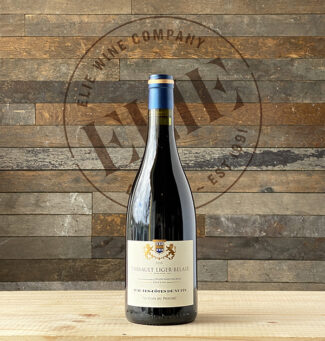 Domaine Thibault Liger-Belair ‘Le Clos du Prieuré’, 2018 Bourgogne Hautes-Côtes de Nuits Rouge ($49)
Domaine Thibault Liger-Belair ‘Le Clos du Prieuré’, 2018 Bourgogne Hautes-Côtes de Nuits Rouge ($49)
Putting the ‘haute’ in Hautes, the three-acre plot of Pinot Noir is located at an elevation of nearly 1500 feet. As a result, the climat requires additional hang-time to ripen the grapes, and harvest is generally done a week to ten days later than the rest of the domain’s holdings. Planted with an east-facing orientation on slopes with a 40% grade, the white marl and limestone soils are difficult to work, but reward perseverance. The wine shows ripe aromas of black cherry, raspberry and smoke with a whiff of roasting meat; full and round in the mouth with a persistent, mineral-laden finish. 2,628 bottles produced.
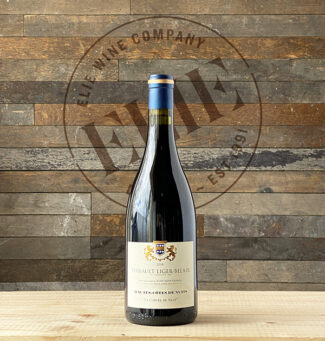 Domaine Thibault Liger-Belair ‘La Corvée de Villy’, 2018 Bourgogne Hautes-Côtes de Nuits Rouge ($49)
Domaine Thibault Liger-Belair ‘La Corvée de Villy’, 2018 Bourgogne Hautes-Côtes de Nuits Rouge ($49)
‘Corvée de Villy’ is a bit more than an acre and a half of stony earth in the upper reaches of Nuits-Saint-Georges on the Chaux plateau. It was planted to Pinot Noir in 1988 and according to Liger-Belair, is comprised of a specific blend of two soils that influence the wine in two steps: “The first 30 centimeters of the soil are composed of red-orange lava clays rich in ferrous elements and then it is the primary limestone that formed the basis for the creation of the Côte. The nose is floral with the aromas of red fruits; the palate is richer and more ‘gourmet’ on first impressions and finishes with freshness and minerality brought by the limestones.” 3,300 bottles made.
Domaine Mongeard-Mugneret
The name ‘Mongeard’ first makes an appearance in Burgundy in 1786, where records show a Mongeard working as vigneron for Domaine de la Romanée-Conti. Skip forward to 1945, when at the age of 16, Jean Mongeard (whose mother was from Famille Mugneret) made wine which he sold by the barrel to négociants. The entire 1945 crop was purchased by Baron le Roy, Marquis D’Angerville, and Henri Gouges, who suggested that the young Mongeard start bottling the wines himself.
In 1975, Jean’s son Vincent began working alongside his father and became responsible for viticulture and vinification of the domain’s wines. He persuaded his father to return to the traditional method of filtering only in certain vintages. Upon his retirement in 1995, Vincent assumed complete leadership of the domain, which now covers more than 75 acres split among 35 appellations.
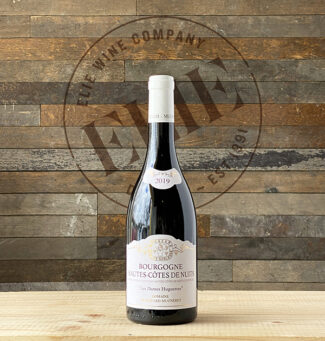 Domaine Mongeard-Mugneret ‘Les Dames Huguettes’, 2019 Bourgogne Hautes-Côtes de Nuits Rouge ($41)
Domaine Mongeard-Mugneret ‘Les Dames Huguettes’, 2019 Bourgogne Hautes-Côtes de Nuits Rouge ($41)
With an average age of 35 years, the five acres of Pinot Noir vines that produce ‘Les Dames Huguettes’ are planted in deep soils composed of limestone and argovien marls. The grapes are hand-sorted and destemmed at the winery and mature in slightly-used (a single vintage) barrels. The wine is tight and structured, with notes of sappy spring flowers, tart black cherries, forest floor, violets, and damp earth. A fabulous length for this price point; it is certainly a match to most Village-level Burgundies.
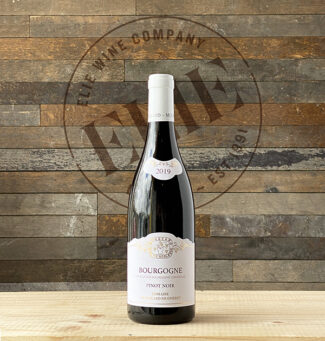 Domaine Mongeard-Mugneret, 2019 Bourgogne Rouge ($35)
Domaine Mongeard-Mugneret, 2019 Bourgogne Rouge ($35)
Vines between 28 and 55 years old, planted on decomposed limestone grit over deep clay; 100% hand-sorted Pinot Noir offers a bouquet of rose petals and spicy wild cherry, leading to a silky palate featuring a core of dense black cherry ends with dusty, nicely integrated tannins.
More Backcountry: Burgundy’s ‘Régionales’ Wines
The whole of Burgundy produces around 200 million bottles of wine per year, and more than half of it falls under the appellation ‘Régionale’. This broad, encompassing catchment covers 23 individual AOPs producing wines on a vast array of terroirs, with chalky soils around Joigny in the north and granitic soils in the south (although limestone-rich, marly soils lie beneath the majority of the appellation).
These wines are considered entry-level, but with the advent of a warming climate and passionate input from a younger generation of winemaker, the wines are of increasing quality.
Domaine Henri Gouges
Considered by many to be Nuits-Saint-Georges’ top domain, the estate has been passed down through many generations and is, to this day, a family affair, with four Gouges at the helm.
Grégory Gouges has been the domain’s winemaker since 2003; Pierre today runs the business end with his cousin Christian, son Grégory, and Grégory’s cousin Antoine. The vineyards cover 36 acres, including seven of the best well-positioned Premiers Crus: Les Chaignots, Les Chênes Carteaux, Les Pruliers, the monopole vineyard of Clos des Porrets-Saint-Georges and nearly three acres each of each of the appellation’s most famous vineyards, Les Vaucrains and Les Saint Georges.
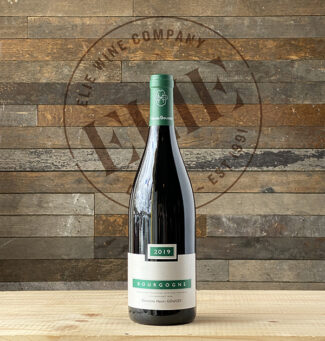 Domaine Henri Gouges, 2019 Bourgogne Rouge ($53)
Domaine Henri Gouges, 2019 Bourgogne Rouge ($53)
From the bottom of hillside in the lieu-dit ‘Des Petits Chaliots’, the wine displays pronounced intensity, with a nose showcasing strawberry, red rose, cured meat, gravel, underbrush and white pepper, finishing with crushed-rock minerality.
Domaine Castagnier
With properties found in the heart of the Côte de Nuits, Jérôme and Jocelyne Castagnier—working a scant ten acres—manage to produce four Grands Crus in the prestigious soils of Gevrey-Chambertin, Morey-Saint-Denis, Chambolle-Musigny and Vougeot.
Says Jérôme: “I’m the fifth or sixth largest owner of Grand Cru in Morey-Saint-Denis, but when it comes to Village-level appellation Morey-Saint-Denis, I’m the smallest. All I have is two rows of vines. That’s one barrel of wine.”
Having left a career as a trumpet player to pursue the vine, he adds, “After my studies at the Conservatory in Dijon and the Conservatory in Paris I took a job in the French Republican Guard Band, working at the Élysée Palace under both Jacques Chirac and Nicolas Sarkozy. In 2004, at the age of 26, I had to decide whether to continue the career in music or to uphold the family tradition. I chose the latter and returned to Morey-Saint-Denis, thus becoming the fifth generation in my family running the domain.”
Among the younger crop of vignerons who manifest a worldview based in respect for the environment, the Castagniers rely on biodynamics and earth-first techniques at every phase of the winemaking process.
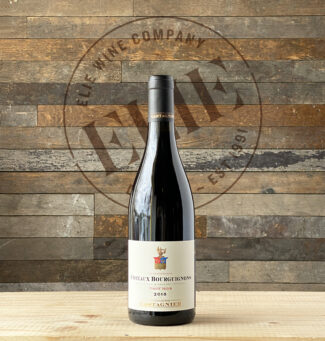 Domaine Castagnier, 2018 Côteaux Bourguignons Rouge ($49)
Domaine Castagnier, 2018 Côteaux Bourguignons Rouge ($49)
Bourgogne Grand Ordinaire or Bourgogne Ordinaire was reimagined in 2011 as Côteaux Bourguignons; it is a generic appellation that extends the length and breadth of Burgundy. Although they are intended as everyday wines, the Castagniers have produced an exceptionally elegant Pinot with complex aromas of plums, raspberries and cherries and fresh red fruit flavors in the mouth with earthy floral, mushroom and mineral notes and balance acidity.
Domaine Manuel Olivier
Like Jérôme Castagnier, Manuel Olivier—despite a childhood spent among the vines—did not follow in the family footsteps directly out of the gate. First, he traveled to Switzerland to pursue his passion for skiing, and along the way, decided that he was equally passionate about wine. He entered the field (literally) with a few acres of vines in 1990, which has grown to nearly 30 in Hautes-Côtes de Nuits, the Côte de Nuits and the Côte de Beaune.
Using wild yeast, his goal is to produce approachable, subtle wines where the fruit expressed delicacy. He says, “This can only be obtained by an obsessive attention to detail; handpicking, low temperature maceration and use of natural yeast. I destem half of my harvest and take a minimum of seven days low-temperature maceration prior to fermentation.”
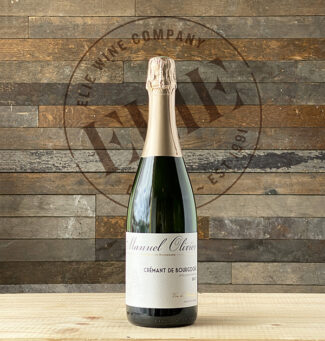 Domaine Manuel Olivier Crémant de Bourgogne Brut ($26)
Domaine Manuel Olivier Crémant de Bourgogne Brut ($26)
Sparkling Burgundy made its entrance into history in 1830 when it was lauded by the poet Alfred de Musset (1820-1857) in his “Secrètes Pensées de Raphaël” — ‘Raphaël’s Secret thoughts.’
Unlike Champagne, the appellation is exclusively applied to white base wines or rosé, which must be made from Pinot Noir, Chardonnay (minimum 30%), Gamay (20% maximum), Aligoté, Melon and Sacy (a low-acid varietal grown within the Yonne and Allier départments).
Domaine Manuel Olivier Crémant de Bourgogne Brut is 25% Aligoté, 50% Chardonnay and 25% Pinot Noir. A méthode traditionelle, it bursts with clean, crisp flavors of apples and white fruit; juicy and full-bodied, with fine floral details and citrus spice keeping it buoyant into a long finish.
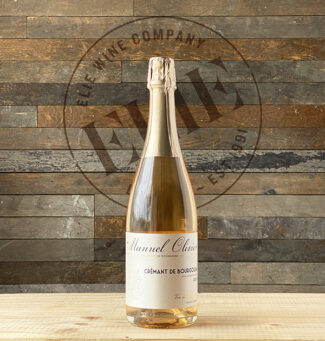 Domaine Manuel Olivier Crémant de Bourgogne Rosé Brut ($26)
Domaine Manuel Olivier Crémant de Bourgogne Rosé Brut ($26)
100% Pinot Noir made from various parcels throughout the Hautes-Côtes de Nuits. Soft raspberry and fresh apricot aromas with a hint of sesame seed highlight a lovely mousse; palate flavors include white cherry, nectarine, and tart strawberry. Medium acidity, light body with a creamy finish.
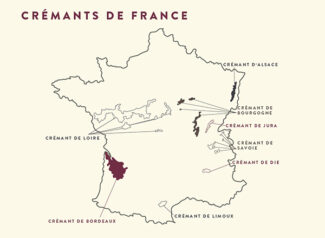
- - -
Posted on 2022.05.01 in Hautes-Côtes de Nuits, Côteaux Bourguignons, France, Burgundy, Wine-Aid Packages
Featured Wines
- Notebook: A’Boudt Town
- Saturday Sips Wines
- Saturday Sips Review Club
- The Champagne Society
- Wine-Aid Packages
Wine Regions
Grape Varieties
Albarino, Albarín Blanco, Albarín Tinto, Albillo, Aleatico, Aligote, Arbanne, Aubun, Barbarossa, barbera, Biancu Gentile, bourboulenc, Cabernet Franc, Caino, Caladoc, Calvi, Carcajolu-Neru, Carignan, Chablis, Chardonnay, Chasselas, Cinsault, Clairette, Corvina, Counoise, Dolcetto, Erbamat, Ferrol, Frappato, Friulano, Fromenteau, Gamay, Garnacha, Garnacha Tintorera, Gewurztraminer, Graciano, Grenache, Grenache Blanc, Groppello, Juan Garcia, Lambrusco, Loureira, Macabeo, Macabou, Malbec, Malvasia, Malvasia Nera, Marcelan, Marsanne, Marselan, Marzemino, Mondeuse, Montanaccia, Montònega, Morescola, Morescono, Moscatell, Muscat, Natural, Niellucciu, Parellada, Patrimonio, Pedro Ximénez, Petit Meslier, Petit Verdot, Pineau d'Aunis, Pinot Blanc, Pinot Gris, Pinot Meunier, Pinot Noir, Pouilly Fuisse, Pouilly Loche, Poulsard, Prieto Picudo, Riesling, Rondinella, Rose, Rousanne, Roussanne, Sagrantino, Sauvignon Blanc, Savignin, Sciacarellu, Semillon, Souson, Sparkling, Sumoll, Sylvaner, Syrah, Tannat, Tempranillo, Trebbiano, Trebbiano Valtenesi, Treixadura, Trousseau, Ugni Blanc, vaccarèse, Verdicchio, Vermentino, Xarel-loWines & Events by Date
- July 2024
- June 2024
- May 2024
- April 2024
- March 2024
- February 2024
- January 2024
- December 2023
- November 2023
- October 2023
- September 2023
- August 2023
- July 2023
- June 2023
- May 2023
- April 2023
- March 2023
- February 2023
- January 2023
- December 2022
- November 2022
- October 2022
- September 2022
- August 2022
- July 2022
- June 2022
- May 2022
- April 2022
- March 2022
- February 2022
- January 2022
- December 2021
- November 2021
- October 2021
- September 2021
- August 2021
- July 2021
- June 2021
- May 2021
- April 2021
- March 2021
- February 2021
- January 2021
- December 2020
- November 2020
- October 2020
- September 2020
- August 2020
- July 2020
- June 2020
- May 2020
- April 2020
- March 2020
- February 2020
- January 2020
- December 2019
- November 2019
- October 2019
- September 2019
- August 2019
- July 2019
- June 2019
- May 2019
- April 2019
- March 2019
- February 2019
- January 2019
- December 2018
- November 2018
- October 2018
- September 2018
- August 2018
- July 2018
- June 2018
- May 2018
- April 2018
- March 2018
- February 2018
- January 2018
- December 2017
- November 2017
- October 2017
- September 2017
- August 2017
- July 2017
- June 2017
- May 2017
- April 2017
- March 2017
- February 2017
- January 2017
- December 2016
- November 2016
- October 2016
- September 2016
- August 2016
- July 2016
- June 2016
- May 2016
- April 2016
- March 2016
- February 2016
- January 2016
- December 2015
- November 2015
- October 2015
- September 2015
- August 2015
- July 2015
- June 2015
- May 2015
- April 2015
- March 2015
- February 2015
- January 2015
- December 2014
- November 2014
- October 2014
- September 2014
- August 2014
- July 2014
- June 2014
- April 2014
- March 2014
- February 2014
- January 2014
- December 2013
- November 2013
- October 2013
- September 2013
- August 2013
- July 2013
- June 2013
- May 2013
- April 2013
- March 2013
- February 2013
- January 2013
- December 2012
- November 2012
- October 2012
Search



